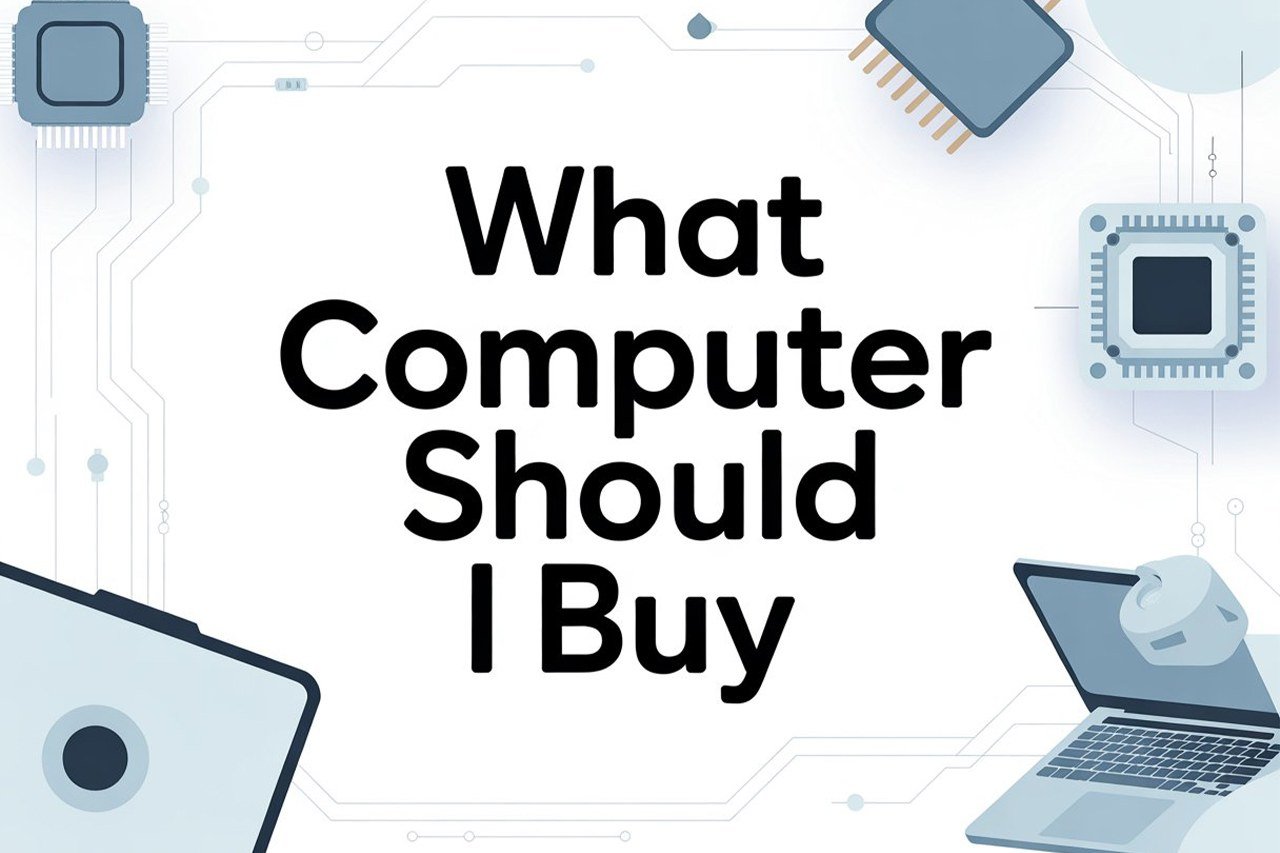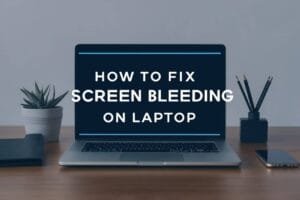Are you staring at a blank screen, overwhelmed by the sheer number of computer choices? Feeling lost in a sea of specs, brands, and price tags? You’re not alone! Buying a computer can feel like navigating a complex maze.
The best computer to buy depends entirely on your individual needs and priorities. Do you need a powerhouse for video editing and gaming, a reliable workhorse for everyday tasks, or something in between? Understanding your requirements is the first and most crucial step.
In this article, we’ll break down the key factors to consider when buying a computer. We’ll explore different types of computers, essential specifications, and how to match them to your specific needs. Let’s get started!
Understanding Your Needs
Before diving into specific models and specs, it’s essential to define how you’ll use your computer. This will significantly narrow down your options and prevent you from overspending on features you won’t need.
Here are some key questions to ask yourself:
- What will you primarily use the computer for? (e.g., work, school, gaming, content creation, general use)
- What are your must-have software applications? (e.g., Microsoft Office Suite, Adobe Creative Cloud, specific games)
- What is your budget? (This will help you determine the range of options you can consider)
- What is your preferred form factor? (e.g., desktop, laptop, 2-in-1)
- How important is portability? (This is crucial if you plan to travel frequently with your computer)
- What are your storage needs? (e.g., how much space do you need for files, applications, and media)
- What are your connectivity requirements? (e.g., Wi-Fi, Bluetooth, USB ports, HDMI)
Answering these questions honestly will provide a solid foundation for your computer search.
Types of Computers
The computer market offers a wide array of form factors, each with its own advantages and disadvantages. Understanding these differences is crucial in making an informed decision.
Desktops
Desktops are traditional computers designed for stationary use. They typically offer more processing power, expandability, and customization options compared to laptops.
- Pros:
- Generally more powerful for the price
- Easier to upgrade components (e.g., RAM, storage, graphics card)
- Better cooling for sustained performance
- Wider range of ports and connectivity options
- Cons:
- Not portable
- Require separate peripherals (monitor, keyboard, mouse)
- Take up more desk space
Desktops are ideal for users who need maximum performance for tasks like gaming, video editing, and 3D rendering, and who don’t need to move their computer frequently.
Laptops
Laptops are portable computers that integrate the display, keyboard, and trackpad into a single unit. They offer convenience and mobility, making them suitable for students, professionals, and anyone who needs to work or play on the go.
- Pros:
- Portable and convenient
- All-in-one design
- Battery powered for use anywhere
- Wide variety of sizes and features
- Cons:
- Less powerful than desktops for the same price
- Upgrading components is often limited or impossible
- Can be more expensive than desktops
- Smaller screen size can be a drawback for some users
Laptops are a great choice for users who prioritize portability and convenience, and who need a computer for everyday tasks, work, or school.
2-in-1s
2-in-1 laptops are a hybrid form factor that combines the portability of a laptop with the versatility of a tablet. They typically feature a touchscreen display and a hinge that allows them to be used in various modes, such as laptop mode, tablet mode, tent mode, and stand mode.
- Pros:
- Versatile and adaptable
- Touchscreen functionality
- Portable and convenient
- Can be used for both work and entertainment
- Cons:
- Can be more expensive than traditional laptops
- Performance may be limited compared to dedicated laptops or desktops
- Keyboard can be awkward to use in tablet mode
2-in-1s are ideal for users who want the flexibility of both a laptop and a tablet, and who value touchscreen interaction.
All-in-One Computers
All-in-one computers integrate all the essential components, except for the keyboard and mouse, into the monitor itself. This design minimizes clutter and offers a clean, sleek aesthetic.
- Pros:
- Space-saving design
- Minimal clutter
- Easy setup
- Aesthetically pleasing
- Cons:
- Limited upgradeability
- Can be more expensive than traditional desktops
- Performance may be limited compared to dedicated desktops
All-in-one computers are a good option for users who prioritize a clean and organized workspace and who don’t need the expandability of a traditional desktop.
Key Specifications
Once you’ve determined the type of computer that best suits your needs, it’s time to consider the key specifications. These specifications will determine the computer’s performance, capabilities, and overall user experience.
Processor (CPU)
The Central Processing Unit (CPU) is the “brain” of the computer, responsible for executing instructions and performing1 calculations. The CPU’s performance directly impacts the computer’s speed and responsiveness.
- Intel vs. AMD: The two main CPU manufacturers are Intel and AMD. Both offer a range of processors for different needs and budgets.
- Cores and Threads: CPUs have multiple cores, which allow them to perform multiple tasks simultaneously. Threads are virtual cores that further enhance multitasking capabilities. More cores and threads generally mean better performance.
- Clock Speed: Clock speed, measured in gigahertz (GHz), indicates how many cycles the CPU can execute per second. A higher clock speed generally translates to faster performance.
Here’s a general guideline for CPU selection:
- Basic Use (web browsing, email, office tasks): Intel Core i3 or AMD Ryzen 3
- Everyday Use (multitasking, media consumption): Intel Core i5 or AMD Ryzen 5
- Demanding Tasks (gaming, video editing, content creation): Intel Core i7 or i9, or AMD Ryzen 7 or 9
RAM (Memory)
Random Access Memory (RAM) is the computer’s short-term memory, used to store data that the CPU needs to access quickly. More RAM allows the computer to run more applications simultaneously and switch between them smoothly.
- Capacity: RAM is measured in gigabytes (GB). 8GB of RAM is generally sufficient for basic use, but 16GB is recommended for most users, especially those who multitask or perform more demanding tasks. 32GB or more is ideal for content creators, gamers, and professionals who work with large files.
- Type and Speed: RAM also has a type (e.g., DDR4, DDR5) and speed (measured in MHz). Newer RAM types and higher speeds generally offer better performance.
Storage
Storage refers to the computer’s long-term memory, where you store your operating system, applications, and files.
- Hard Disk Drive (HDD): HDDs are traditional storage devices that use spinning disks to store data. They offer large storage capacities at a relatively low2 cost, but they are slower than SSDs.
- Solid State Drive (SSD): SSDs are newer storage devices that use flash memory to store data. They are significantly faster than HDDs, resulting in faster boot times, application loading, and file access.
- Capacity: Storage capacity is measured in gigabytes (GB) or terabytes (TB). The amount of storage you need depends on your usage. 256GB SSD is a good starting point for most users, but 512GB or 1TB SSD is recommended for those who store a lot of files or install many applications.
It’s often a good idea to have a combination of both SSD and HDD: an SSD for the operating system and frequently used applications for speed, and an HDD for mass storage of less frequently accessed files.
Graphics Card (GPU)
The Graphics Processing Unit (GPU) is responsible for rendering images, videos, and animations. A dedicated GPU is essential for gaming, video editing, 3D rendering, and other graphics-intensive tasks.
- Integrated Graphics: Many CPUs come with integrated graphics, which are sufficient for basic use and light tasks.
- Dedicated Graphics Card: Dedicated GPUs offer significantly better performance for graphics-intensive applications. NVIDIA GeForce and AMD Radeon are the two main manufacturers of dedicated GPUs.
Here’s a general guideline for GPU selection:
- Basic Use: Integrated graphics
- Light Gaming and Multimedia: NVIDIA GeForce GTX 1650 or AMD Radeon RX 6500
- Mid-Range Gaming and Content Creation: NVIDIA GeForce RTX 3060 or AMD Radeon RX 6600 XT
- High-End Gaming and Professional Work: NVIDIA GeForce RTX 3080 or higher, or AMD Radeon RX 6800 XT or higher
Display
The display is a crucial component that affects the visual experience.
- Size: Display size is measured diagonally in inches. Common sizes for laptops range from 13 to 17 inches, while desktop monitors can range from 24 inches to 32 inches or larger.
- Resolution: Resolution refers to the number of pixels on the screen. Higher resolution means sharper images and more detail. Common resolutions include 1920×1080 (Full HD or 1080p), 2560×1440 (Quad HD or 1440p), and 3840×2160 (Ultra HD or 4K).
- Panel Type: Common panel types include:
- TN (Twisted Nematic): These panels are generally less expensive but offer narrower viewing angles and less accurate color reproduction.
- IPS (In-Plane Switching): IPS panels offer better color accuracy and wider viewing angles, making them suitable for content creation and general use.
- OLED (Organic Light-Emitting Diode): OLED panels offer superior contrast, deep blacks, and fast response times, but they can be more expensive.
- Refresh Rate: Refresh rate, measured in hertz (Hz), indicates how many times the display updates the image per second. A higher refresh rate results in smoother motion, which is particularly important for gaming.3 Common refresh rates include 60Hz, 120Hz, 144Hz, and higher.
Operating System
The operating system (OS) is the software that manages the computer’s hardware and software resources. The most common operating systems for personal computers are:
- Windows: The most popular operating system for PCs, offering a wide range of software compatibility and a user-friendly interface.
- macOS: Apple’s operating system, known for its user-friendly interface, stability, and integration with Apple devices.
- Chrome OS: A lightweight operating system based on the Chrome browser, primarily used on Chromebooks.
Connectivity
Connectivity options determine how the computer connects to other devices and networks.
- Wi-Fi: Essential for wireless internet connectivity. Look for support for the latest Wi-Fi standards (e.g., Wi-Fi 6).
- Bluetooth: Enables wireless connection to peripherals such as keyboards, mice, and headphones.
- USB Ports: Used to connect peripherals such as external drives, printers, and input devices. Look for a variety of USB ports, including USB-A and USB-C.
- HDMI Port: Used to connect the computer to an external display, such as a monitor or TV.
- Ethernet Port: Used for wired network connections, which can be faster and more reliable than Wi-Fi.
Matching Your Needs to a Computer
Now that we’ve covered the key specifications, let’s explore how to match them to different user needs.
For Students
Students typically need a reliable and portable computer for note-taking, research, writing papers, and general productivity.
- Recommended Specs:
- CPU: Intel Core i3 or i5, or AMD Ryzen 3 or 5
- RAM: 8GB or 16GB
- Storage: 256GB or 512GB SSD
- Display: 13-inch or 14-inch Full HD
- Operating System: Windows or macOS
- Form Factor: Laptop or 2-in-1
- Key Features: Portability, good battery life, comfortable keyboard, reliable performance for everyday tasks.
For Professionals
Professionals need a computer that can handle multitasking, productivity applications, and potentially more demanding tasks like video conferencing and data analysis.
- Recommended Specs:
- CPU: Intel Core i5 or i7, or AMD Ryzen 5 or 7
- RAM: 16GB or 32GB
- Storage: 512GB or 1TB SSD
- Display: 14-inch or 15-inch Full HD or Quad HD
- Operating System: Windows or macOS
- Form Factor: Laptop or Desktop
- Key Features: Performance, reliability, multitasking capabilities, comfortable keyboard, good display for extended use.
For Gamers
Gamers need a powerful computer that can handle demanding games with smooth frame rates and high resolutions.
- Recommended Specs:
- CPU: Intel Core i7 or i9, or AMD Ryzen 7 or 9
- RAM: 16GB or 32GB
- Storage: 512GB or 1TB SSD
- GPU: NVIDIA GeForce RTX 3060 or higher, or AMD Radeon RX 6600 XT or higher
- Display: 15-inch or 17-inch Full HD or Quad HD with a high refresh rate (144Hz or higher)
- Operating System: Windows
- Form Factor: Desktop or Gaming Laptop
- Key Features: Powerful GPU, high refresh rate display, fast storage, good cooling, responsive keyboard.
For Content Creators
Content creators, such as video editors, graphic designers, and photographers, need a computer that can handle demanding creative applications.
- Recommended Specs:
- CPU: Intel Core i7 or i9, or AMD Ryzen 7 or 9
- RAM: 32GB or 64GB
- Storage: 1TB or 2TB SSD
- GPU: NVIDIA GeForce RTX 3060 or higher, or AMD Radeon RX 6600 XT or higher
- Display: 15-inch or 17-inch 4K display with accurate color reproduction
- Operating System: Windows or macOS
- Form Factor: Desktop or High-End Laptop
- Key Features: Powerful CPU and GPU, large and color-accurate display, fast storage, ample RAM, good connectivity.
Budget Considerations
Your budget will play a significant role in determining the computer you can buy. It’s essential to strike a balance between your needs and your budget.
- Under $500: You can find decent laptops or desktops for basic use, such as web browsing, email, and office tasks. However, performance may be limited for more demanding tasks.
- $500 – $1000: This price range offers a good balance of performance and features. You can find laptops and desktops suitable for everyday use, multitasking, and light gaming.
- $1000 – $1500: In this range, you can find more powerful laptops and desktops suitable for gaming, content creation, and professional use.
- $1500 and above: This is the high-end range, where you can find top-of-the-line computers with the latest technology and maximum performance.
Where to Buy
You can buy computers from various sources, both online and offline.
- Online Retailers: Amazon, Newegg, Best Buy, and manufacturer websites are popular online retailers that offer a wide selection of computers, competitive prices, and customer reviews.
- Physical Stores: Best Buy, Apple Stores, and other electronics retailers allow you to see and test computers before you buy.
Tips for Buying a Computer
Here are some additional tips to help you make the right decision:
- Read Reviews: Before buying a computer, read reviews from reputable sources and other users to get an idea of its performance, reliability, and any potential issues.
- Compare Prices: Compare prices from different retailers to ensure you’re getting the best deal.
- Check Warranty and Support: Check the warranty and support options offered by the manufacturer or retailer.
- Consider Future Needs: Think about your future needs and choose a computer that can accommodate them.
- Don’t Overspend: Don’t overspend on features you don’t need. Focus on the specifications that are most important for your usage.
Additional Considerations
Beyond the core specifications, here are some additional factors to consider:
- Ergonomics: If you plan to use your computer for extended periods, consider the ergonomics of the keyboard, mouse, and display.
- Battery Life: If you need a laptop for on-the-go use, battery life is an important factor.
- Build Quality: Choose a computer with a sturdy build quality that can withstand everyday use.
- Aesthetics: Consider the design and aesthetics of the computer if it’s important to you.
Making the Final Decision
Choosing the right computer is a personal decision that depends on your individual needs, priorities, and budget. By carefully considering the factors discussed in this article, you can make an informed decision and find a computer that meets your requirements and enhances your digital experience.
Final Thoughts
There’s no one-size-fits-all solution. By understanding your needs, exploring the different types of computers, and carefully considering the key specifications, you can confidently choose a computer that empowers you to work, create, play, and connect with the world. Remember to prioritize your needs, set a realistic budget, and do your research before making a purchase. Happy computing!






